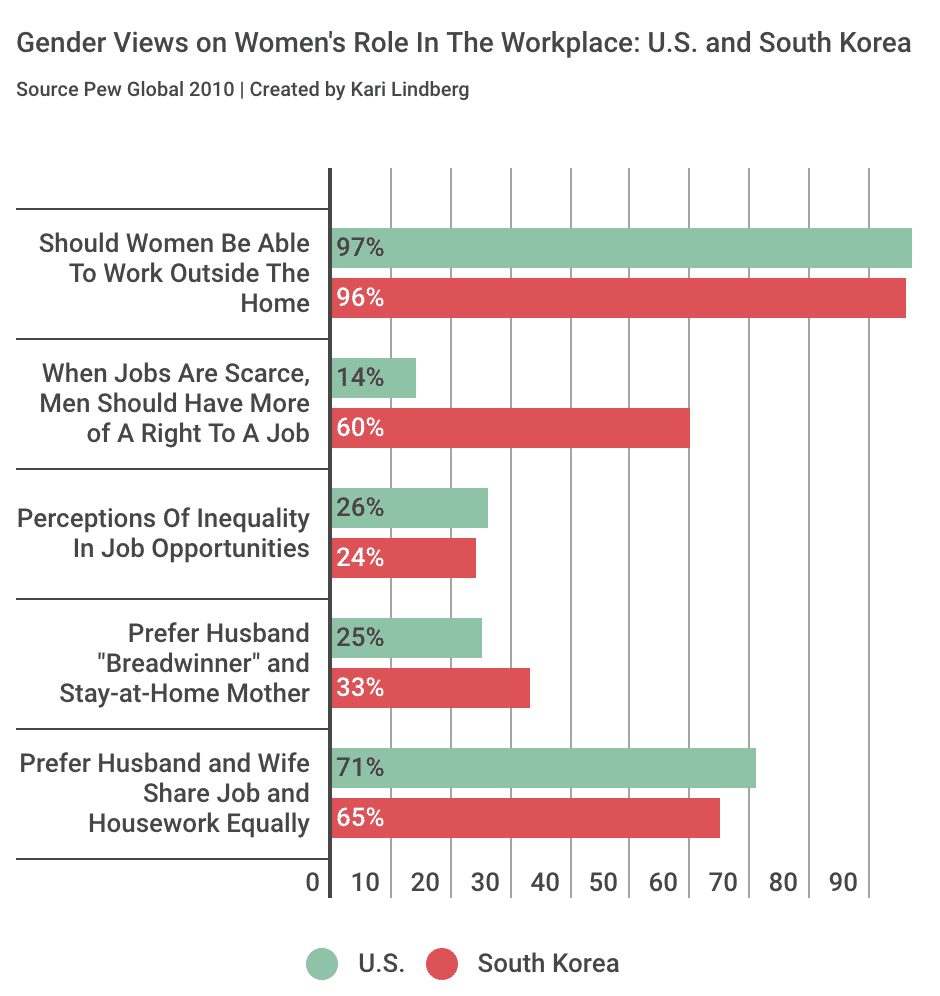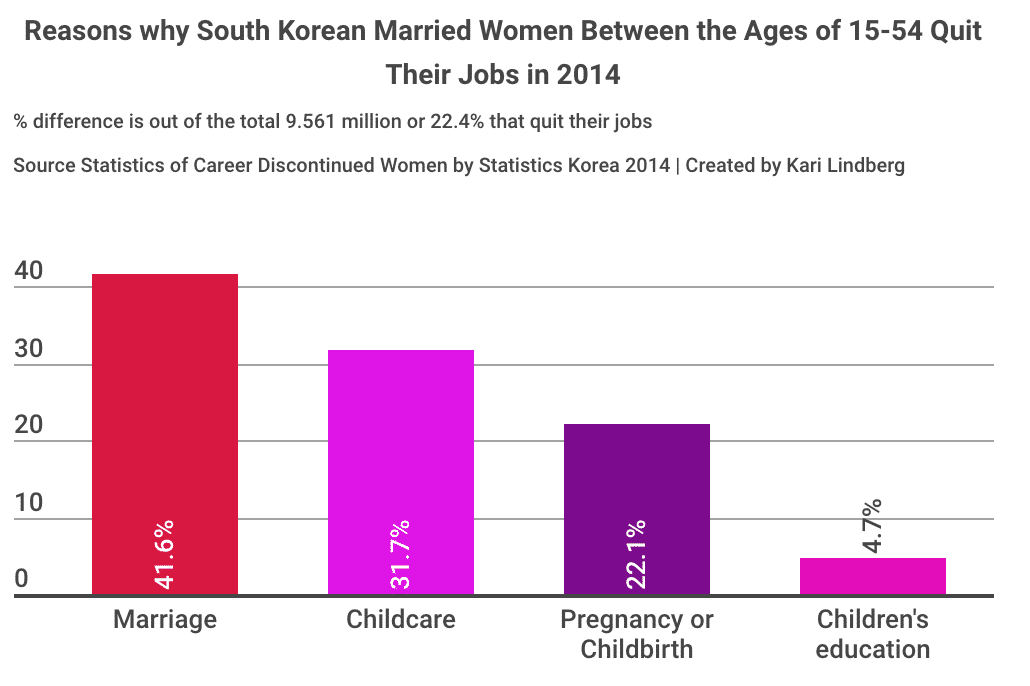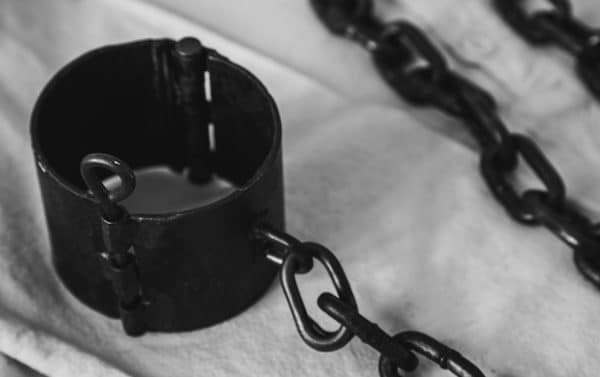
If cultural capital is any measure of quantifying how developed a country is, then within the past decade, South Korea’s development has shot through the roof. Some would go so far as to say PSY’s 2012 song “Gangnam Style,” by becoming a global musical phenomenon and subsequently the first video to reach one billion views on YouTube, forged the yearning for Korean music and culture within the heart and minds of a generation of global youth. Given its increased accumulation of global soft power, ranking 18th on the 2016 United Nations Human Development Report, it is shocking that it still has a wide gender inequality gap—ranking 116th on the World Economic Forum 2016 Global Gender Gap, the lowest placement of any developed country.
South Korea’s gender gap seems particularly surprising given the amount of progress women’s rights have made in the country over the past three decades. Major steps towards equality include the 2000 legal act that ensured a 30% quota for female candidates running in electoral districts—as well as 50% for those vying for seats in the National Assembly—and the 2001 creation of the Ministry of Gender Equality (later renamed as the Ministry of Gender Equality and Family), which provides a legal mandate to promote women’s equality and empowerment. Despite women’s gains in their pursuit of equal rights, experts point to the prevalence of traditional values that stem from the Confucian ideals (man as a breadwinner; woman as a homemaker; family, honor, and respect; and related tenets) that have led to fixed gender binary spheres. Speaking to the Columbia Journal of International Affairs, Eun Mee Kim, Dean at Ewha Women’s University, described the seeming progression and stagnation of gender equality in Korea as “hav[ing] been heavily influenced by traditional thoughts such as Confucianism that really made it difficult for women to be respected equal to men.”
South Korean experts point to the deeply entrenched stereotypical gender binary attitudes that weaken gender equality and women’s protection laws. Dr. Jiso Yoon, researcher at the Korean Women’s Development Institute, a government-subsidized research institute promoting women’s capabilities and social and political participation, noted that a “study analyzing gender norms of Korean citizens suggest that factors like sex, age, and employment status explain behavior regarding gender roles.” Clear gender bias, stemming from traditional gender binary norms, may help explain Korean women’s 63.7% participation in the workforce, including the largest gender wage gap amongst the world’s developed countries at 37.5%, according to the 2015 Organization for Economic Cooperation and Development (OECD) gender wage gap report. (See chart above.)
Much like the role that Confucianist thought has played in shaping South Korean traditional gender norms, so too has an amalgamation of Judeo-Christian, ancient Greek, and ancient Roman thought shaped the American traditional belief that female and male genders belong to separate spheres (see chart on right). Throughout history, the American penal system has cited the notion of separate gender spheres to justify discrimination against women. The Supreme Court used that justification in the case of Bradwell vs. Illinois in the 1872 ruling that the 14th Amendment did not grant women the right to become lawyers, even if they were otherwise qualified, citing “God designed the sexes to occupy different spheres of action” as justification. Similarly, that same argument was made in modern time by Justice Kennedy in the 2007 Supreme Court case of Gonzales vs. Carhart, which upheld the Partial-Birth Abortion act of 2003 by stating, “While we find no reliable data to measure the phenomenon, it seems unexceptionable to conclude some women come to regret their choice to abort the infant life they once created and sustained.”
While the Supreme Court does not make explicit references to the Bible, its ruling implies a question about the justification for two separate spheres: Is it that these ideas of separate spheres cause people to believe that women shouldn’t be involved in public life, or is it that people use religious ideas to justify an existing social prejudice? Garrett Epps, professor of law at Baltimore University and contributor to The Atlantic, asserts that both are true: “Religious tradition belief is a cause, but it is not the only cause.” This illustrates how the traditional notion of separate spheres continues to enforces and justifies gender inequality in the US, particularly from a legal standpoint. Substantiating Epps’ assertion is the almost 3,500 pregnancy discrimination charges that the Equal Employment Opportunity Commission filed in 2016, even though the Pregnancy Discrimination Act was created in 1978. As Emily Martin, vice president and general counsel of the National Women’s Law Center, said to Fortunemagazine, “It is still the case that too many people think pregnancy and motherhood are incompatible with work.” Experts have also cited motherhood and childcare as a factor in the 18.9% gender wage gap and women’s low labor participation rate of 72.6%.
Similar sentiments of a perceived motherhood penalty exists in South Korea. A survey of human-resources teams by Saramin, a job-seeking portal, found that one-third of firms had rejected female job applicants who were at least as well-qualified as the male candidates, responding that “only a man could do the job.” Factoring in such gender binary norms as child care, which is expected to be the role of the mother, and with working women spending approximately 3.5 hours a day on household chores, according to the The Economist’s 2016 Glass-Ceiling Index, female barriers to equality grow. Additionally, the Korean Ministry of Statistics 2014 survey found that 22.4% of South Korean women, ages 15–54, felt the need to quit their jobs after getting married, and 58.4% of these cited child care-related responsibilities. (See chart above.)
While South Korea and the U.S. maintain laws that make it illegal for employers to discriminate based on gender, gender discrimination in both countries persist. Major contributing factors include the prevalence of gender discrimination according to traditional binary gender norms and the notion of separate spheres. Given this reality, scholars, experts, and advocates in the U.S. are pushing for the ratification of the Equal Rights Amendment, while South Korean activists are pushing for the ratification of a female quota system, each as a way to improve female labor force participation.
Activists in both countries view these laws as perhaps the only ways to eliminate traditional gender norms. Explaining it in an American context, Epps said, “If part of the Constitution included equal rights for women, and if Congress has the power to enforce this law, additional laws that may be passed to guarantee equal pay equal treatment as well, and would have a lot more behind them, in terms of the way the courts might interpret them.” From the South Korean perspective, feminist activist Hyojeong Kim wrote in an op-ed for the Huffington Post, “It is necessary to impose a quota system to ensure that 30 % of all high-level economic and political positions are held by women,” referencing that similar quota systems in Rwanda, Iceland, and Norway have helped increase female labor force participation.
Whether ratifying the ERA or creating a quota system would enable complete gender equality remains to be seen. Regardless, enactment of each would help override the traditional justifications that have continued to perpetuate gender inequality in both countries.
Kari Soo Lindberg is a 2017 fellow in the Sy Syms Journalistic Excellence Program, funded by the Sy Syms Foundation. The Sy Syms Journalistic Excellence Program at Women’s eNews fellowship supports editorial and development opportunities for editorial interns in the pursuit of journalistic excellence.






